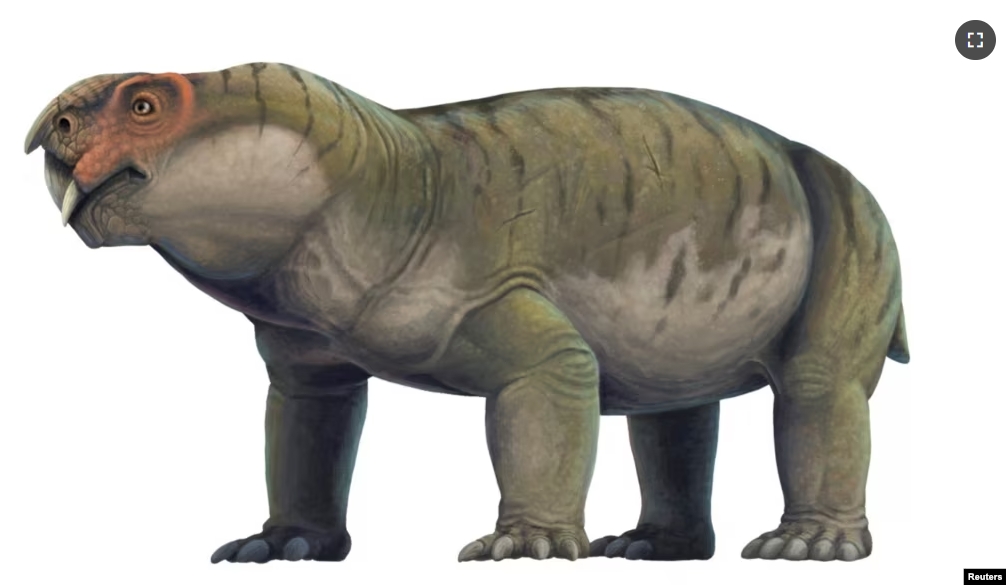Researchers say a new study on an ancient pig-like animal is helping them learn more about brain development in mammals.
The animal is known as Gordonia. It is believed to have lived more than 250 million years ago in what is present-day Scotland. Back then, Scotland was part of a sandy desert. Today, it receives a lot of rain and enjoys four seasons.
Gordonia was known as a protomammal – a predecessor of mammals. The creature lived during the Permian Period. Some protomammals kept some qualities of their reptile ancestors.
An international group of researchers used high-quality, 3D imaging equipment to examine a Gordonia fossil. This permitted the team to make a digital copy of the animal’s brain. The researchers said this led them to learn new details about the size and shape of the brain in early mammal development.
The team recently released their findings about the fossil in a study published in the Zoological Journal of the Linnean Society.
The lead writer of the study was doctoral student Hady George, who attends Britain’s University of Bristol. She told Reuters news agency, “Overall, Gordonia’s brain looks more like a reptile than a mammal despite it being more closely related to us than any modern living reptile.”
The researchers noted that the animal’s brain was very different from those of modern mammals. However, the size of its brain compared to its body seemed to suggest the beginning of gains in intelligence seen later on in mammals and humans. George said the front of Gordonia’s brain – called the forebrain – is comparatively much smaller than any other mammal.
Another leader of the research was Steve Brusatte, a scientist at the University of Edinburgh in Scotland. He told Reuters the brain the team studied was not as circular as a human brain. Rather, it is shaped more like “a long, arched tube.”
Brusatte noted that upon close examination, the researchers realized the animal’s brain was “pretty big compared to the size of the body.”
He added that it is difficult to measure intelligence in modern-day humans. So it is even more difficult to measure this in long-disappeared animals. “But we can at least say generally that it would have been a smart creature for its time,” Brusatte said.
The researchers estimated Gordonia was about one meter long, weighing 20 kilograms. The animal’s head was tall and wide, with a pointed mouth and tusks to help it eat desert plant material. It had a pig-like build, but its legs were not as long as a pig’s, they noted.
Gordonia belonged to a group of protomammals called dicynodonts. The group survived the worst mass extinction in Earth’s history 252 million years ago at the end of the Permian Period. The extinction event is thought to have been caused by extreme volcanic activity.
Scientists believe the first dinosaurs began appearing about 230 million years ago, while mammals came about around 20 million years later.
I’m Bryan Lynn.
Reuters reported this story. Bryan Lynn adapted the report for VOA Learning English.
__________________________________________
Words in This Story
mammal – n. an animal that feeds its babies on milk from its body
predecessor – n. a person or thing that existed before another
three-dimensional (3D) – adj. having or appearing to have length, depth and height
fossil – n. something (such as a leaf, skeleton, or footprint) from a plant or animal that lived in ancient times and that you can see in old rocks
tube – n. a long, think container with a round center
arched – adj. something that has a curved shape like an arch
tusk – n. one of two long, pointed teeth that come out of the mouth of some animals
extinct – adj. not existing anymore
